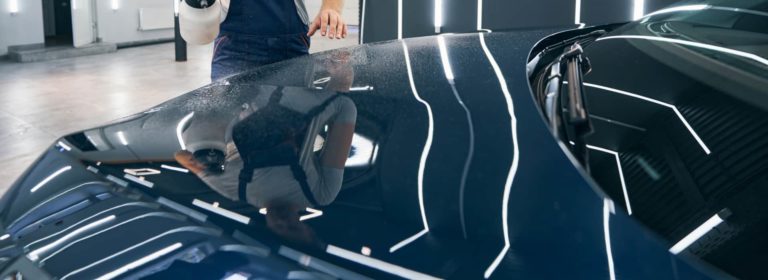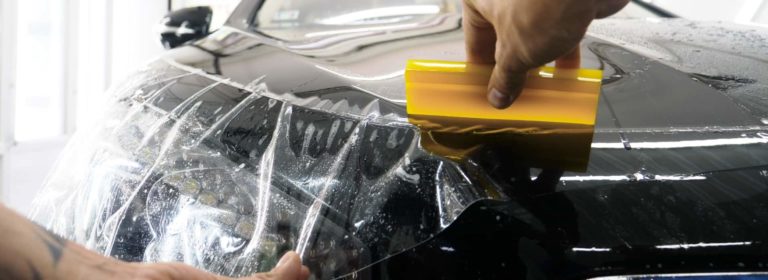Vehicle Protection Film FAQ
Answers To The Most Common Question About Protection Films
If you’re in the market for protection films, you’ve likely got a lot of questions. What are they? What do they do? How much do they cost? In this article, we’ll answer all of your most common questions about protection films. We’ll start with a general overview and then move on to specific types of protection films. By the end of this article, you’ll have all the information you need to make an informed decision about whether or not protection films are suitable for you!
What are protection films?
Protection films are a type of plastic designed to protect your vehicle from damage caused by road debris, such as rocks or gravel. They come in many different forms and can be applied to your car’s exterior or interior surfaces. Some protection film products even include sun-blocking properties for added UVB ray protection! The most popular types of protection films are:
Paint Protection Films (PPF)
Paint protection films, or PPFs, are thin layers of clear vinyl that help to protect your vehicle’s paint from damage caused by road debris. The film is applied on top of the painted surface and will prevent any scratches or chips in the paint job when something hits your car.
Windshield Protection Films
Window protection films, or WSPFs, are designed to protect the windshield from chips and cracks caused by flying debris. The film is applied to the windshield’s exterior and will prevent any damage from happening if something hits it.
Headlight Protection Films
Headlight protection films, or HPFs, provide a barrier between your vehicle’s headlights and flying debris. The film is applied to the exterior of the headlight lens and will prevent any damage from happening if something hits it.
Interior Protection Films (Screens, Dashboards, and Panels)
Interior protection films are designed for use on the inside of your car. They can be applied to the dashboard, door panels, and other interior surfaces. The films help protect against scratches, scuffs, and dents over time.
How much do protection films cost?
The cost of protection films varies depending on the type and size of the film you choose. Generally speaking, though, the price is relatively affordable, and the cost is often worth it to protect your car from costly damage.
Are protection films challenging to install?
Most protection films are relatively straightforward to install, but they require special tools or skills. However, you may want to consult with a professional installer if you’re not comfortable doing it yourself.
Do protection films need to be replaced often?
The lifespan of a protection film depends on the type you choose, but most films can last for several years with proper care. However, it’s always a good idea to check in with your installer every once in a while to make sure everything is still in good condition.
Now we will discuss how to maintain your protection film to make it last longer.
How do I maintain my protection film?
The best way to maintain your protection film is by keeping it clean. Use a soft cloth and some soapy water to clean the film’s surface regularly. You may also want to apply a ceramic coating once a year to help keep it looking new.
Is it possible to apply a protective film to chrome?
Yes, it can be applied to chrome. The film will protect the chrome from pitting and corrosion caused by road debris or salt spray. You’ll want to make sure that any waxing products do not contain oils that may cause damage over time if they’re left on too long without wiping them off completely first!
Can boats and other watercraft be protected with PPF?
Yes, protection films can be applied to boats and other watercraft. The films help protect against scratches, scuffs, and dents that can occur over time.
Will a ceramic coating on PPF film make it shine?
Yes! Applying a ceramic coating will make the film look new again. It will also help protect it from scratches and debris in the future. Just remember to wipe off any extra wax before driving your vehicle so that you don’t get an oily residue on your clothes or upholstery!
What if my installation went wrong?
If you find out after applying PPF Film to your vehicle that the installation was done incorrectly, please get in touch with us immediately so we can replace it with a new one at no cost to you.
Can I cover my car in PPF?
Yes! You can cover anything from headlights to bumpers and even windows if needed! We offer different film types for each application, so make sure to read about the other options before choosing one for your needs.
Can I use an automatic car wash?
Yes! Once PPF film has been applied to your vehicle, you can safely use a touchless automatic car wash as long as it doesn’t have any brushes or other abrasive materials that may scratch up against them while cleaning your car.
Can I use clay on film?
Yes, but you should be careful not to apply too much pressure when using it, as this could cause damage over time if left for an extended period without wiping it off entirely first! Do not use any abrasive products (such as Bug and tar removers) on PPF Film.
Can the film be waxed?
No, you should not wax your protection film as it will cause a buildup of oils over time and may damage the surface. We recommend using a ceramic coating instead every once in a while to help keep it looking new and protect it from scratches and debris.
Can the film heal deep scratches?
The depth of a scratch that the film will heal depends on the type of protection film you choose. However, most films can fix scratches up to around 12-13 microns in depth.
Will removing the film harm my car’s paint?
If done correctly, the removal of PPF should not harm your car’s paint. However, please contact us if you have any questions or concerns about removing the film yourself. We are always here to help!
Can PPF be applied over paint touch-ups?
Yes, it can be applied to a vehicle that has been repainted. However, there may not be enough adhesion for the film to stick correctly if this is done too soon after painting (within two weeks). This could cause lifting or peeling issues down the road, so we recommend waiting until at least six months after painting before applying PPF.
Can a new car get paint protection film?
Yes, it can! We always recommend applying protection film to new cars as soon as they are bought. This will help protect the paint from scratches and other damage during the first few months or years of ownership.
What if the film cleaner doesn’t work?
You can use a mild ammonia-free dish soap and water solution, or you may opt for more abrasive options such as rubbing alcohol mixed with vinegar mixed in equal parts. Make sure to test these in an inconspicuous area first before applying them all over your vehicle’s film.
Will a partial front-end PPF show the film’s edge?
If done correctly, a partial front-end film installation should not have any noticeable edges. However, don’t hesitate to contact us if you have any questions or concerns about this!
How can I remove excess adhesive after removing the film?
If you have trouble removing the adhesive from your car after removing the film, try using some rubbing alcohol on a cotton swab and carefully wipe away any leftover pieces of adhesive that may still be stuck to your car.
Is it possible to apply PPF on top of vinyl wraps?
Yes, it can! However, we recommend waiting until at least six months after installing a wrap before applying protection films so that the adhesive has enough time to cure. Additionally, you will need to make sure that the wrap is fully healed before applying the adhesive so that the adhesive has enough time to cure and form a strong bond.
Will PPF film work on my car’s glossy interior?
Yes, you can use protection films to protect your interior from scratches and scuffs that may happen over time due to wear-and-tear or more severe damage like key marks or spilled liquids.
How long after a full wrap can I apply protection film?
We generally recommend waiting at least six months before applying any protection film to a car that has just been wrapped. This will give the adhesive plenty of time to cure and form a strong bond. Additionally, it is essential to make sure that the wrap is fully healed before applying any protection film. Thanks for reading! If you have any other questions, please don’t hesitate to reach out to us. We’re always happy to help!
If I sell my car, does the warranty transfer?
Yes, it does! The warranty will transfer to the new owner as long as they provide proof of purchase from us.
Can I reuse the film once it’s been removed from my car?
No, the film cannot be reused once removed from the car.
Can I install PPF over a paint sealant?
The paint sealant must be stripped from the vehicle and then cleaned with water or alcohol before applying the film.
If you have any other questions that weren’t answered in this post, please feel free to contact us, and we will be happy to answer them! We hope this gives you a better understanding of the different types of protection films available and how to maintain them adequately. Thanks for reading!

GET A FREE ESTIMATE
Schedule your in-person Consultation/Price Quote at our Shop
Already have a Price Quote? Schedule your Service Online









